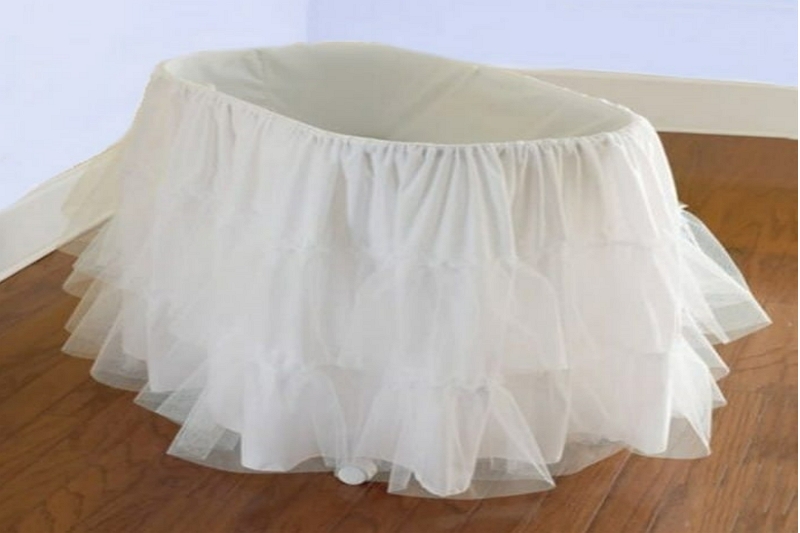If you are looking for a how to make a bassinet skirt tutorial, then this post is perfect for you. In this post, we will go through how to make your own bassinet skirt and how to sew it together. We’ll also show how easy it is with our step by step pictures. This is the easiest way to get your bassinet ready!

Steps on how to make a bassinet skirt
Step 1. Place the fabric on a flat surface with the wrong side up. You need to measure how long you want your skirt and how high it needs to be. After that, add 15cm extra length for sewing and seams (this is an estimate).
Step 2. Fold in half how wide you would like each edge of the top part of your bassinet skirt. As we are going to attach this piece directly onto our main plywood board or MDF base, make sure they match perfectly! Measure how tall it will need to be too so just after folding both ends into themselves when placing on top of one another.
The fold should not show any excess material but rather fit snugly together as shown above. Once satisfied, pin them together keeping them as straight and neat as possible.
Once fully pinned, sew through the folded edge with a sewing machine following your previous stitching line that you created while folding it in half.
Step 3. Now on to how we are actually going to attach this top part of our bassinet skirt onto our plywood base! The trick here is not to use glue or any adhesive at all but rather staple gun everything together for extra tightness support which will help keep it from sliding off when the baby starts moving around. Take one look at how I attached my own piece above.
It’s easy peasy so don’t freak out about how complicated those tutorials say it’s supposed to be! You can do this!! The first measure how wide both edges are between where you want the skirt to start and end on each side of your plywood piece if you chose not to go with a pre-cut bassinet kit.
Step 4. Now, how much fabric should we cut out? Well here is how I decided how big my final product was going to be. Measure how long between those two points that you just marked in step one, then add about an inch or so for wiggle room because let’s face it.
Then decide where exactly does this top part start after it folded over onto itself like above. Make sure you have enough excess left over when stitching up these pieces together too because remember they will overlap by at least three inches or more depending on how wide your bottom piece is.
Step 5. Once you have these three pieces, it’s time to pin them how they are supposed to be sewn together so that the final product looks like this and not how mine looked when I got all confused! Then sew it how you would any other project with a zigzag stitch for more durability.
Now if your fabric frays really bad or just doesn’t fray at all then use some hem tape on each side of the top piece before folding over onto itself but if done correctly there should be no need for either one of those things!
Step 6. Now how do we fix up our bottom part? To make my life easier I cut out two separate layers because let’s face it…those baby legs can get messy while changing their diaper or even sometimes if they are just being moved around. To do that simply cut a separate opening for where the legs come out of and how big it is will depend on how much fabric you have left from the top part but mine was about 12″x12″.
Step 7. Next up comes sewing this back together with right sides facing each other so we can go ahead turn our project inside out! When doing your final stitch make sure to leave yourself at least an inch or two open because we still need to flip it right side out and get rid of those pesky creases in there once its all said and done
Now I went ahead and added some Ric rac trim to my bottom piece as well because why not? The more frills the better I say!
Step 8. The next thing we want to do is turn our fabric right side out and iron it so everything lays how you’d like it. We are then going to take some ribbon that’s about an inch wide or more depending on how much coverage you would like, attach a safety pin at one end of the ribbon and feed this through your tube opening turned the wrong side out.
You will need to make sure there are no remaining creases in your fabric by pressing them with either steam or a hot iron (on low heat). Now comes time for sewing up those final three sides using several straight stitches but leaving enough room open again so as not to sew shut any small openings such as where Ric rac trim was placed.
